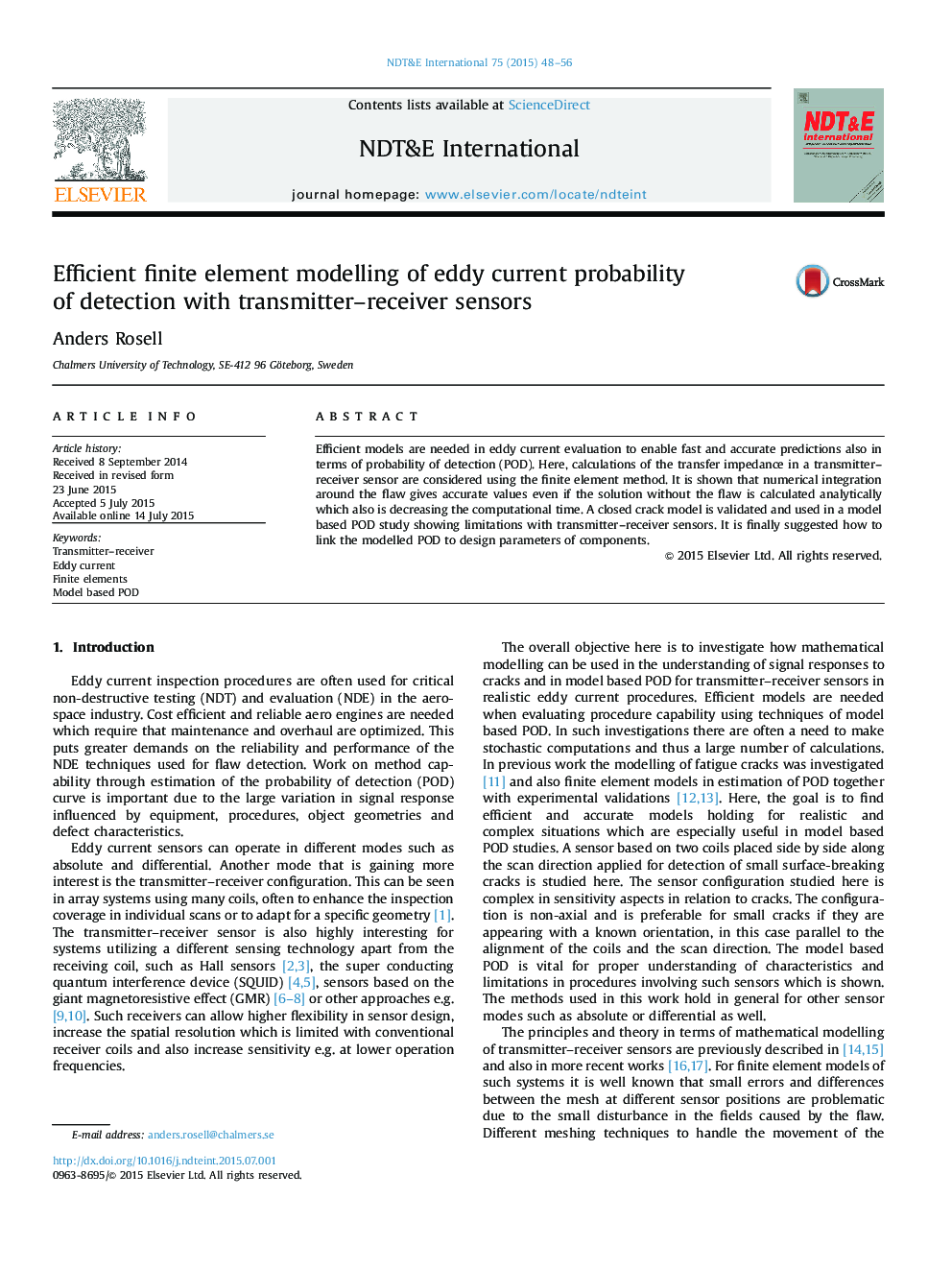| Article ID | Journal | Published Year | Pages | File Type |
|---|---|---|---|---|
| 295013 | NDT & E International | 2015 | 9 Pages |
•A combined FEM and an analytical eddy current model increase computational speed.•Closed crack model agrees well with results from real fatigue cracks.•The NDE procedure is coupled not only to POD of a flaw but also to its severity.
Efficient models are needed in eddy current evaluation to enable fast and accurate predictions also in terms of probability of detection (POD). Here, calculations of the transfer impedance in a transmitter–receiver sensor are considered using the finite element method. It is shown that numerical integration around the flaw gives accurate values even if the solution without the flaw is calculated analytically which also is decreasing the computational time. A closed crack model is validated and used in a model based POD study showing limitations with transmitter–receiver sensors. It is finally suggested how to link the modelled POD to design parameters of components.
